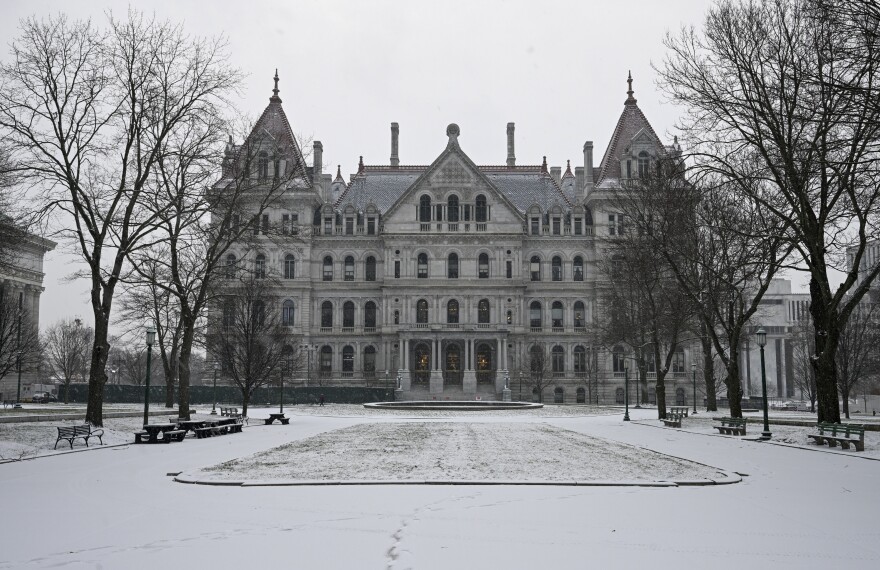The New York State Legislature is poised to vote on new congressional district lines before the end of the month, with control of the House of Representatives likely in the balance.
Lawmakers have left themselves a short window to approve the lines for the 2024 elections, and Democrats who lead the Legislature have not signaled publicly what they intend to do.
Under current law, petitioning for primaries is due to begin Tuesday, and the boundaries of the state’s 26 congressional districts need to be in place by then.
Democrats who lead the Senate and Assembly have two choices.
The first is simply adopting a new set of maps that the state’s bipartisan redistricting commission approved in a 9-1 vote on Feb. 15.
Redistricting expert Jeffrey Wice, who heads the New York Census and Redistricting Institute at New York Law School, said under the state’s constitution, the Legislature must put the commission’s maps on the floor for a vote.
“The Legislature is required to vote on the map without any amendments,” Wice said. “In order to approve the map, both the Assembly and the Senate each have to have two-thirds of the members voting in the affirmative.”
Though Democrats hold supermajorities in each house, there are indications that a handful of Democrats might not vote for the maps, and they could be rejected.
The maps approved by the commission leave largely intact the lines drawn by a court-appointed special master in 2022. There are some minor changes that could disadvantage one GOP incumbent, Brandon Williams from the Syracuse area, and help another Republican House member, Marc Molinaro, who represents portions of the Hudson Valley and Southern Tier.
Some Democrats say the maps drawn by the special master helped Republicans flip four congressional seats from Democratic to Republican in 2022, and contributed to the GOP’s control of the House.
This time, state Republican Party leaders are urging the Legislature to adopt the redistricting commission’s maps, while Democratic Party leaders are expressing doubts are expressing doubts.
Senate Majority Leader Andrea Stewart-Cousins, speaking just before the maps were released, said legislators intended to think carefully before making a decision.
“We will take a look at it,” Stewart-Cousins said on Feb. 13. “The reality is, you’ve got to give it some time to be in the public sphere.”
If the Legislature rejects the commission maps, their second option is to come up with yet another set of maps. They could go back to the drawing board, literally, and configure new lines for the congressional districts. Or they could dust off a previous proposal that they offered to the special master in 2022 as an alternative. The special master rejected those maps, though.
The second option would likely spark another court battle. In 2022, Republicans sued over the maps that Democratic lawmakers drew. The state’s highest court ultimately rejected those maps, saying that they were gerrymandered.
But this time, Wice said, the court has a new chief judge, Rowan Wilson. Wilson was an associate judge on the court in 2022, and wrote the lead dissenting opinion in the decision that overturned the Democrats’ maps.
“We have a different chief judge in the driver's seat now,” he said.
He said Democrats who are in charge in the Legislature may decide it’s worth the risk.
“It's a gamble,” he said.
Wice said if Democrats could craft new maps that meet all the requirements, like compactness, population deviation, and minority voting rights. He said “it’s entirely possible they could get by a court review.”
“And favor a few more Democrats than the current map does,” he said.
Lawmakers late in the week were still deliberating in private meetings. If they are unable to meet the Feb. 27 deadline, they could change the rules and postpone the start of petitioning, reduce the number of signatures required to qualify for the ballot, or put off the primary until later in the summer.



